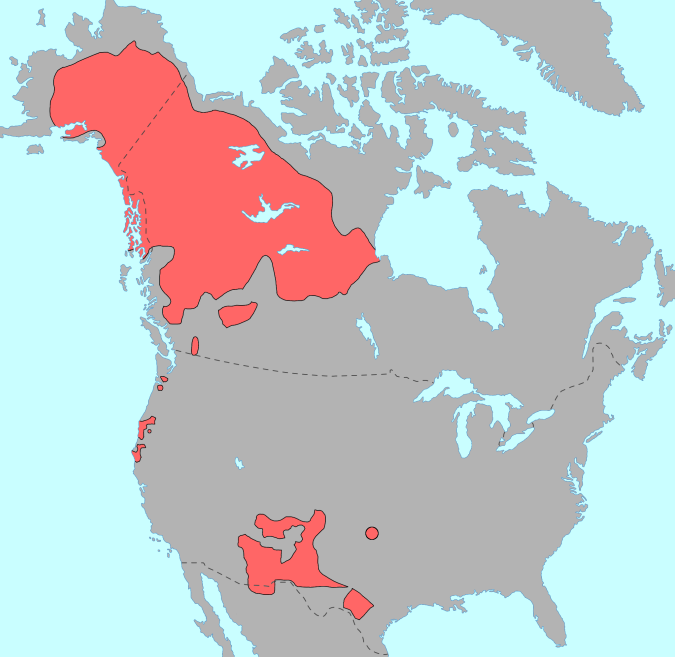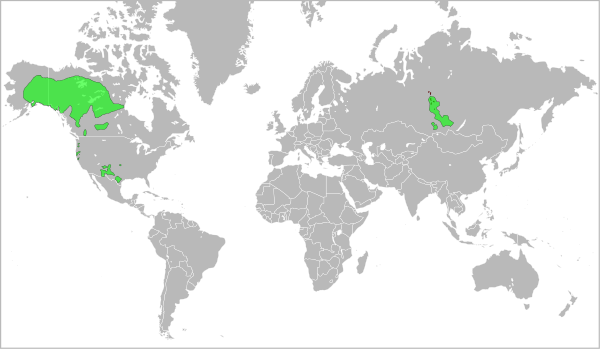I knew linguists that had worked with long-rangers (those who propose wide-ranging linguistic affiliations); I have in fact met the late Sergei Starostin, proofread contributions by John Bengtson, and read issues of Mother Tongue (journal). I even have a quote from Mother Tongue as one of my .sigs, though not approvingly:
“Assuming, for whatever reasons, that neither scholar presented the evidence properly, then there remains a body of evidence you have not yet destroyed because it has never been presented.” — Harold Fleming
Spot the logical fallacy. The quote actually was trying to defend a link between Basque and Caucasian languages, which is part of the Dené–Caucasian hypothesis.
Dené–Caucasian languages – Wikipedia
Dené–Caucasian is a proposed broad language family that includes the Sino-Tibetan, Northeastern Caucasian, Na-Dené, Yeniseian, Vasconic (including Basque) and Burushaski language families. A connection specifically between Na-Dené and Yeniseian (Dené–Yeniseian languages hypothesis) was proposed by Edward Vajda in 2008, and has met with some acceptance.
The validity of the rest of the family, however, is controversial or viewed as doubtful by most historical linguists.
Dené–Yeniseian languages is new to me (of course, since I was reading long-range reconstructions in the 1990s), and I’ll come back to it.
The majority opinion in historical linguistics is to mistrust long-range linguistic families, because the number of correspondences those families are based on is increasingly tenuous, and the amount of noise introduced by the great chronological distance overwhelms the signal of possible links.
When long-range reconstruction tries to use the traditional methodology that gave us Indo-European, as with Nostratic languages (trying to find commonality between Indo-European and its neighbours), the majority opinion is sometimes polite, but almost always unconvinced. Particularly when those families are instead based on eyeballing, the majority opinion simply does not want to know.
Long-range advocates defend eyeballing by the fact that Joseph Greenberg used eyeballing to work out the linguistic history of Africa. But his proposals only can get confirmed by detailed comparative work (just as the periodic table needed to wait on subatomic particles for its workings to be understood); and unsurprisingly the linguists who are sceptical about long-range comparison in general, such as Lyle Campbell, are sceptical about his work on Africa too.
When it comes to American Indian languages, we have poor historical records, and congenitally cautious historical linguists (such as Campbell) combining to refuse to reduce the number of American Indian language families below 150. Now, obviously, there weren’t 150 different waves of migration across the Bering Strait: those language families are quite likely all related. Greenberg thought they are almost all related as Amerind, again by eyeballing. But most Amerindianists don’t see enough convincing data there to call Amerind a family.
There are two indigenous language families in the Americas that Greenberg did not think could be lumped in as Amerind: Eskimo–Aleut languages, and Na-Dené languages. The best known languages of Na-Dene are Apache and Navajo; but the bulk of the Na-Dené languages are spoken in Western Canada and Alaska:

And Na-Dené may (may) reflect a distinct wave of migration into America: Settlement of the Americas – Wikipedia says “The interior route is consistent with the spread of the Na Dene language group and Subhaplogroup X2a into the Americas after the earliest paleoamerican migration.”
And if the Na-Dené are a distinct, later wave of migration, then we might (might) be able to find related languages on the other side of the Bering Strait.
The linguists behind Dené-Caucasian are Russians of the Nostratic school, not Americans of the eyeballing school. But it’s a big family: it includes North-Eastern Caucasian (of which Chechen is the language you’re likeliest to have heard of), Sino-Tibetan (which includes Chinese), Burushaski (an isolate in Pakistan which lots of linguists would like to connect to something), Yeniseian (a language family in central Siberia), and, alas, Basque, which everyone wants to try to connect to something.
There’s extensive discussion of the pros and cons to Dené-Caucasian over at Wikipedia. The proposal, like Nostratic, does try to do things by the book, which is laudable. But it relies on comparing proto-languages, which are themselves reconstructions; and that is risky business, given how uncertain the reconstructions are; if you switch reconstructions (e.g. the reconstruction of Sino-Tibetan or North Caucasian), it falls apart. And given the ginormous number of consonants in Caucasian, any reconstruction of North-Eastern Caucasian is going to be fragile.
The news to me was that the more recent proposal of Dené-Yeniseian, lining Na-Dene to the Yeniseian languages in central Siberia, has not been shouted down:

It helps rhetorically that its proponent Edward Vajda has dismissed an earlier eyeballing-based proposal of Dené-Yeniseian as based on coincidence. I hate to say it, but it may also have helped that he’s American and not Russian. But a lot of Western linguists have lined up since to say that his proposal sounds plausible—a lot more than have ever said anything nice about Nostratic. (Lyle Campbell of course has continued to do his Lyle Campbell thing and be sceptical.)
And if you’re going to link Na-Dené with a group of languages the other side of the Bering Strait, Yeniseian looks somehow… safer than Yeniseian + Sino-Tibetan + Northeastern Caucasian + Burushaski + Basque.

